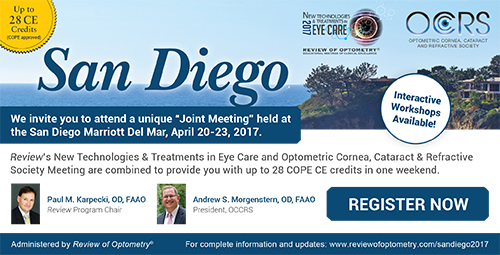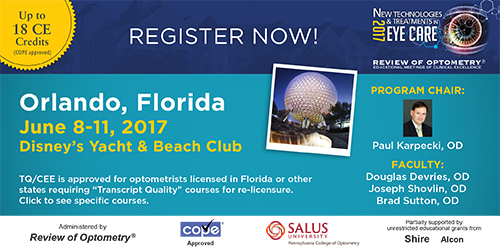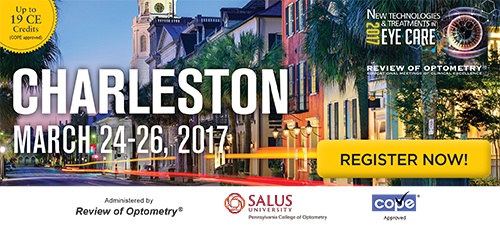
A
weekly e-journal by Art Epstein, OD, FAAO
Off the Cuff: Hate
Hate is one emotion I am thankfully not very familiar with. There are things and people I don’t much care for, but I don’t dislike anything sufficiently to rouse an emotion I would describe as hate. Maybe because I don’t feel hate myself, I rarely see hate in others. But an encounter with a patient earlier this week brought me face to face with it. The experience was so disturbing, yet so powerful that I felt compelled to share it. The patient, an elderly Polish woman with a touch of an accent, had come for a routine exam. She was new to our office. Our extern began the exam, but soon called me in to evaluate what he thought were narrow angles. He was right, and anterior segment OCT confirmed the right eye was easily occludable and the left eye not far behind. With asymmetric and elevated pressures and an abnormal GCC in the OD, transient narrow angle closure seemed pretty certain. I explained the condition to the patient, cautioned her about narrow angle attacks and told her that a referral for an LPI was indicated. She was clearly nervous, and I had the feeling she would likely ignore the recommendation. As I often do with anxious patients, I tried to calm her. I asked what city she was from and joked that I, too, had Polish roots at least part of the time. When she asked what I meant by that, I shared what my father had told me about his country of origin. When I asked where he came from, my dad would always reply “sometimes Russia, sometimes Poland.” The area he was from had changed hands so frequently pre-WWII that his native country depended on the day of the week. The patient laughed at my story and started to open up. She admitted that she was concerned about the cost of a procedure because she had lost half of her pension after retiring from her state government job. I reassured her that insurance would cover most, if not all, of it and asked why her pension had been cut. She told me that it was because of a woman who hated her. She explained that this bureaucrat had cut the pension and then showed up at every hearing to make sure it wasn't restored. When I asked why this woman hated her so, she looked straight at me, her eyes now filled with a bitter, angry glint that I’ve seen only a few times in my life and she said, “because she is a Jew, and Jews hate the Polish.”
|
|||||
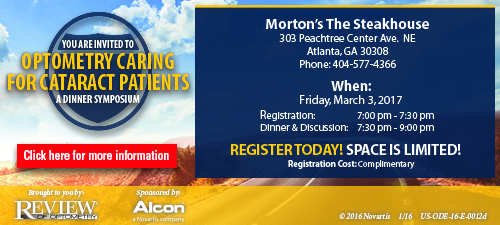 |
||
| Near Binocular Visual Function in Young Adult Ortho-k vs. Soft Contact Lens Wearers | ||||
This study compared near-point binocular vision function of young adult myopes wearing orthokeratology (OK) lenses to matched single-vision soft disposable contact lens (SCL) wearers. A retrospective clinical record analysis of all OK wearers (18 years to 30 years) presenting over an 18-month period was undertaken. Data was extracted for 17 OK wearers, with 17 SCL wearers matched for age, refractive error and duration of contact lens wear. Binocular vision data included horizontal phoria (phoria), horizontal base-in (BIFR) and base-out fusional reserves (BOFR), and accommodation accuracy (AA).
The OK group was 25.8±3.2 years, with a duration of wear of 45.7±25 months and refractive error of R -2.09±1.23D, L -2.00±1.35D. Compared to matched SCL wearers, the OK group were significantly more exophoric (OK -2.05±2.38Δ; SCL 0.00±1.46Δ) and had better accommodation accuracy (OK 0.97±0.33D; SCL 1.28±0.32D). BIFR and BOFR were not different in the two groups. Frequency histograms showed that more SCL wearers had high lags of accommodation (AA≥1.50D: 8 SCL,2 OK) and esophoria (≥1Δ: 5 SCL,1 OK) than OK wearers. A positive correlation was found between refraction and phoria in the SCL group. Young adult myopes wearing OK lenses displayed more exophoria and lower accommodative lags at near compared with matched single-vision SCL wearers. Researchers concluded that young adult myopes with specific binocular vision disorders may benefit from OK wear in comparison with single vision SCL wear. They added that these findings have relevance for the visual acceptance of OK lenses and management of risk factors for myopia progression. |
||||
SOURCE: Gifford K, Gifford P, Hendicott PL, et al. Near binocular visual function in young adult orthokeratology versus soft contact lens wearer. Cont Lens Anterior Eye. 2017; Feb 15. [Epub ahead of print]. |
||||
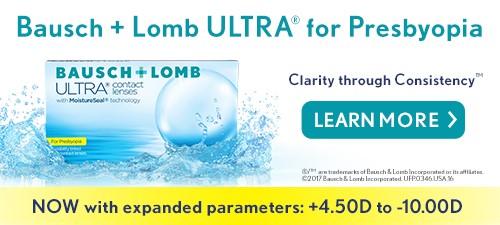 |
||
| Stereoacuity After Small Aperture Corneal Inlay Implantation | ||||
The aim of this study was to compare stereoacuity before and after Kamra corneal inlay implantation for the correction of presbyopia. In the prospective study of 60 patients who underwent Kamra inlay implantation, patients were examined before and six months after surgery for stereoacuity, uncorrected distance visual acuity (UDVA) and uncorrected near visual acuity (UNVA) The mean stereoacuity before surgery was 29.5±28.1 arcsec (range: 20 to 200) and at six months was 29.8±26.4 arcsec (range: 20 to 200). The decline in stereoacuity was not statistically significant. At six months follow-up, UDVA was 20/25 or better in all 60 patients, and UNVA was J2 (20/25) or better in 51 (85%) patients. Investigators found no significant change in stereoacuity following Kamra inlay implantation and suggested the inlay could be a good treatment option for improving near vision in presbyopic patients while preserving stereoacuity and distance vision. |
||||
SOURCE: Linn SH, Skanchy DF, Quist TS, et al. Near binocular visual function in young adult orthokeratology versus soft contact lens wearer. Clin Ophthalmol. 2017;11:233-35. |
||||
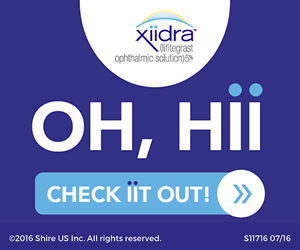 |
||
| Diurnal Intraocular Pressure Variation in Pseudoexfoliation Syndrome | ||||
Investigators prospectively assessed 19 pseudoexfoliation syndrome (PXS) patients (10 bilateral and 9 unilateral) and 25 age- and sex-matched normal subjects to describe and compare the diurnal intraocular pressure (IOP) variation in patients with PXS and normal subjects. One eye of each control subject and bilateral PXS patient was selected randomly, and pseudoexfoliative eyes of unilateral cases were enrolled in this study. All patients were admitted to the investigators’ ophthalmology department and underwent diurnal IOP testing (six measurements over 24 hours). The mean IOP of PXS patients at all time intervals was significantly higher than the control group. Likewise, a significant difference in the maximum IOP, range of IOP and minimum IOP, as well as the standard deviation of the pressure at each time point, existed between groups. Normal individuals did not show diurnal variation greater than 5mm Hg. Of patients with PXS, 55.6% showed diurnal variation greater than 5mm Hg. In addition, in 10% of patients with PXS, the diurnal variations were equal to or higher than 10mm Hg. Variations in IOP during the daily 24-hour cycle in patients with PXS were higher than control groups. Investigators wrote that significant fluctuations in the diurnal curve of IOP in PXS may be an important factor in predicting eyes that could develop pseudoexfoliative glaucoma and that IOP fluctuation could influence the diagnostic and prognostic evaluation of PXS. |
||||
SOURCE: Altintas O, Yuksel N, Karabas VL, et al. Near binocular visual function in young adult orthokeratology versus soft contact lens wearer. Eur J Ophthalmol. 2004;14(6):495-500. |
||||
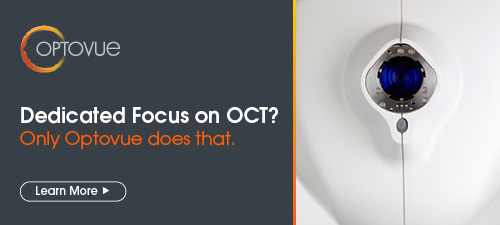 |
||
 |
||
| News & Notes | |||||||||
| SECO Features New Business Course and Certificate Offerings SECO International returns to the Georgia World Congress Center in Atlanta for its 94th Annual Meeting (March 1-5). More than 6,000 optometrists and ophthalmic professionals from around the world will gather at SECO 2017, featuring 100 field leaders presenting more than 200 continuing education courses for optometrists and ophthalmic professionals. In addition, attendees will view the latest products and technologies in the exhibit hall and partake in 50 social and affiliate events. Other highlights of the 2017 program will include the following offerings: • MedPRO360: This course will bring together healthcare professionals from all specialties and areas of practice to learn ways to improve the profitability of their business. The one-day program will teach proven strategies in marketing, management, analytics and human resources, among other subjects. • Ophthalmic Professionals Certificate Program: SECO will unveil its Ophthalmic Professional Certificate, a two-year training program covering key areas necessary to become a complete technician. As part of the program, participants can choose from a tailored selection of courses and labs, and then sit for a comprehensive, hands-on skills exam to earn the certificate. Read more about SECO 2017. |
|||||||||
|
Optometric Physician™ (OP) newsletter is owned and published by Dr. Arthur Epstein. It is distributed by the Review Group, a Division of Jobson Medical Information LLC (JMI), 11 Campus Boulevard, Newtown Square, PA 19073. HOW TO ADVERTISE |


